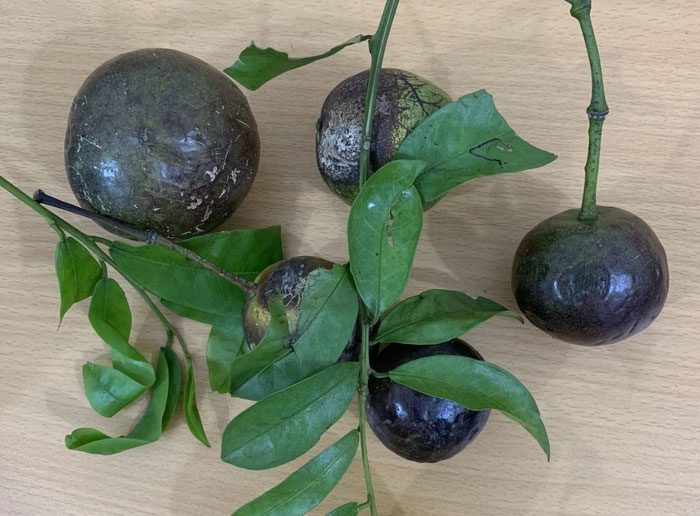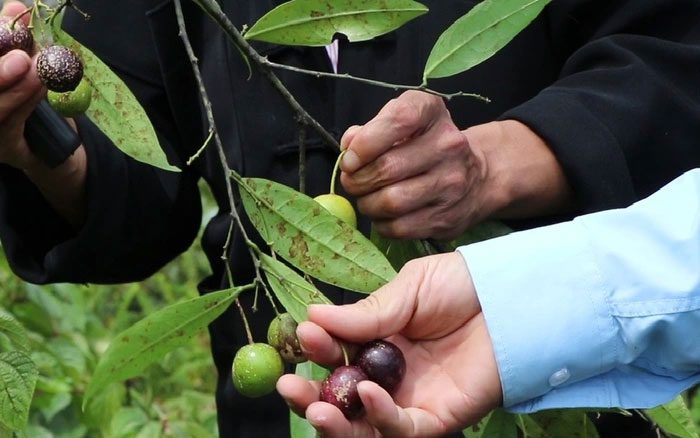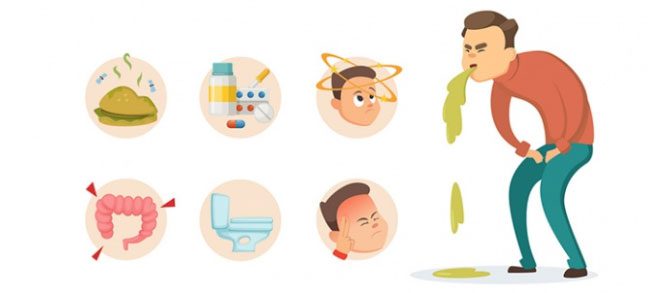On July 31 and August 1, the Dong Van District General Hospital admitted 11 children aged 3 to 12 who suffered from poisoning after consuming a strange fruit, confirmed to be called Hồng Châu.
According to the families of the affected children, they had gone to cut grass for livestock and then decided to pick and eat Hồng Châu fruit. By the evening of July 31, all 11 children from two villages exhibited symptoms such as dizziness, headaches, abdominal pain, nausea, and were rushed to the Dong Van District General Hospital for emergency treatment.
It has been reported that Hồng Châu is an eye-catching fruit that resembles an edible fruit, which may have attracted the children. However, this forest fruit is extremely toxic and can be life-threatening if ingested.
1. What is Hồng Châu Fruit?
The Hồng Châu plant is scientifically known as Capparis versicolor Griff, part of the Capparaceae family. In local dialects, it is also referred to as Rom tree, Mề gà tree, Khua mật tree, Móc quạ tree, chi pản sloa.
Hồng Châu fruit is quite rare and primarily found in the northern mountainous regions such as Ha Giang and Cao Bang.
To recognize this fruit, one can rely on several characteristics:
- Hồng Châu is a climbing plant with sharp and hard bark. The leaves are elongated, about 11 – 12 cm long, and have a width equivalent to two adult fingers.
- The Hồng Châu fruit is round and about the size of a child’s fist. It has a smooth skin without fuzz, and is visually appealing as the unripe fruit is light green, turning purple and slightly soft when ripe. Inside, the fruit has a pink layer with 4 to 6 seeds, each surrounded by a soft, watery white pulp, containing a large, slightly flattened seed resembling a corn kernel that is purple in color. The peak season for Hồng Châu fruit is from July to September.

Hồng Châu fruit can be easily mistaken for an edible fruit. (Photo: Internet).
2. Why Can Hồng Châu Fruit Cause Poisoning?
The Hồng Châu fruit, specifically its seeds, contains a toxin called Alkaloid. This toxin is not only found in Hồng Châu but also in many other plants, such as leaf of poison and deadly nightshade.
Alkaloids have a very high physiological activity in humans and animals, especially affecting the nervous system. Even a small amount of alkaloid can be lethal. Notably, the alkaloids in plants are often in the form of salts of organic acids such as malic acid, citric acid, oxalic acid, succinic acid, which are easily soluble in water. Therefore, they can be readily absorbed through the digestive system of humans and animals, leading to severe poisoning.
According to animal testing results, the minimum lethal dose via the digestive system of seeds with pulp for rabbits is 18g/kg of body weight and for white rats is 72g/kg of body weight.

Hồng Châu seeds contain Alkaloid toxin posing health risks to humans. (Photo: Internet)
3. Symptoms of Hồng Châu Fruit Poisoning
When poisoned by Hồng Châu fruit, individuals may experience symptoms such as nausea, abdominal pain, dizziness, and disorientation. The toxin from Hồng Châu fruit can quickly affect the cardiovascular system and lungs, causing acute respiratory failure and cardiac collapse if not treated promptly.
In cases of poisoning from Hồng Châu fruit, it is crucial to take the affected person to the hospital immediately for timely medical intervention to prevent further complications.
Currently, there is no specific antidote for Hồng Châu fruit poisoning. Patients will be treated for symptoms and the underlying cause.
First aid measures include inducing vomiting, gastric lavage, and administering activated charcoal. Treatment focuses on enhancing detoxification, maintaining vital functions (cardiac support, respiratory assistance, seizure control, preventing pulmonary edema), conducting tests, monitoring, and adjusting electrolyte levels in the blood.
A few important notes for first aid for Hồng Châu fruit poisoning include if the patient is unconscious or convulsing, they should be placed on their side. While transporting to the nearest medical facility, caregivers should continuously monitor the patient for any abnormal reactions. If there are signs of weak breathing or respiratory arrest, artificial respiration or mouth-to-mouth resuscitation should be initiated immediately.
Importantly, do not allow the patient to walk as physical activity can expedite the absorption of the toxin into the body.

Nausea, abdominal pain, dizziness are symptoms of Hồng Châu fruit poisoning. (Photo: Internet)
4. Other Common Plants Containing Toxic Alkaloids
Not only Hồng Châu, but several other plants with high Alkaloid content are noteworthy, particularly those commonly found in the northern mountainous regions, which have been responsible for many cases of forest plant poisoning.
Leaf of poison: Scientists have identified 17 types of Alkaloid in the leaf of poison, including gelsenicin, gelsamydin, gelsemoxonin, gelsemicine, sempervirine, koumicine, koumine, kouminicine, and kounidine, among which gelsenicin is the most potent toxin. If poisoned by the leaf of poison without timely medical intervention, the risk of death is very high.
The leaf of poison can be recognized by its characteristics as a climbing plant with hairless stems and branches, slightly ridged. The leaves are opposite, elongated oval, lanceolate with sharp petioles, smooth edges, and a glossy appearance. Flowers grow in clusters at the tips of branches or leaf axils, with yellow petals. The fruit is a capsule, brown, and slender.
Strichnine tree: The strychnine tree is a medicinal herb in Traditional Chinese Medicine but is very toxic if not used properly. The seeds of the strychnine tree and some related plants contain two main alkaloids: strychnine and brucine. The toxic dose of strychnine seeds ranges from 30-100 mg for adults, which can be fatal.
The strychnine tree is a tall woody plant with smooth branches, sometimes having thorns in the leaf axils, with grey bark that has lenticels. Flowers form in racemes, either white or pale yellow, and the fruit is spherical, measuring 3-6 cm in diameter, with a hard, smooth shell.
It can be said that many people suffer from forest plant poisoning annually. To prevent this, especially for children who are easily attracted to strange and eye-catching fruits, it is advised not to consume any unknown plants or fruits. Educating children not to eat any unfamiliar plants in the wild, even for play, is essential.


















































